Ozito SDU-5100U Handleiding
Ozito
Schroefmachine
SDU-5100U
Bekijk gratis de handleiding van Ozito SDU-5100U (3 pagina’s), behorend tot de categorie Schroefmachine. Deze gids werd als nuttig beoordeeld door 60 mensen en kreeg gemiddeld 4.3 sterren uit 30.5 reviews. Heb je een vraag over Ozito SDU-5100U of wil je andere gebruikers van dit product iets vragen? Stel een vraag
Pagina 1/3

CORDLESS
SCREWDRIVER
3.6V Lithium Ion
ORIGINAL INSTRUCTIONS
SPECIFICATIONS
Voltage: 3.6V
Bit Holder Size: 6.35mm (1/4”)
No Load Speed: 180/min
Max Torque: 3.5Nm
Battery: 1.5Ah Li-ion
Charge Time: 3-5 Hours
Weight (tool only): 0.34kg
SDU-5100U
WHAT’S IN THE BOX
Cordless Screwdriver
Driver Bits x 29
Charging Cable
MAINTENANCE
DESCRIPTION OF SYMBOLS
TROUBLESHOOTING
On/off trigger is locked
Ensure that the forward / reverse lever is in the correct position; pressed left for
forwards direction, pressed right for backwards direction. If it is in between the two
settings the on/off trigger will be locked.
SPARE PARTS
ozito-diy.co.uk
SCREWDRIVER SAFETY WARNINGS
GENERAL POWER TOOL SAFETY WARNINGS - PERSONAL SAFETY
THIS MANUAL CONTAINS IMPORTANT SAFETY AND OPERATING INSTRUCTIONS FOR YOUR
BATTERY CHARGER.
1. Before using the charger read all instructions and cautionary markings on the charger, battery pack and
the product using the battery pack.
2. This charger is not intended for any uses other than charging rechargeable batteries. Any other use may
result in risk of re, electric shock or electrocution.
3. Do not place any object on top of the charger or place the charger on a soft surface that may result in
excessive internal heat. Place the charger in a position away from any heat source.
4. To reduce risk of damage to the electric plug and cord, pull by the plug rather than the cord when discon-
necting the charger.
5. Make sure the cord is located so that it will not be stepped on, tripped over, or otherwise subjected to
damage or stress.
6. Do not operate the tool if it has received a sharp blow, been dropped or otherwise damaged in any way.
Have it checked by an electrician or power tool repairer.
7. Do not disassemble the tool. Take it to an electrician or power tool repairer when service or repair is
required. Incorrect reassembly may result in a risk of electric shock, electrocution or re.
8. To reduce risk of electric shock, unplug the charger from the outlet before attempting any cleaning.
Removing the battery pack will not reduce this risk.
9. Never attempt to connect 2 chargers together.
10. DO NOT store or use the tool and battery pack in locations where the temperature may reach or exceed 40ºC
(such as inside sheds or metal buildings in summer).
11. The charger is designed to operate on a standard 5V USB port. Do not attempt to use it on any other
voltage!
12. The battery is not fully charged out of the carton. First read the safety instructions and then follow the
charging notes and procedures.
13. The longest life and best performance can be obtained if the battery pack is charged when the air tem-
perature is between 18 - 24ºC. Do not charge the battery pack in an air temperature below 10ºC or above
40ºC. This is important and will prevent damage to the battery pack.
14. Do not incinerate the battery even if it is seriously damaged or is completely worn out. The battery can
explode in a re.
15. Never attempt to open the battery for any reason. If the plastic housing of the battery pack breaks or cracks,
immediately discontinue use and do not recharge.
16. During charging, the battery must be placed in a well ventilated area.
WARNING! Hold power tool by insulated gripping surfaces, when
performing an operation where the cutting accessory may contact hidden
wiring or its own cord. Cutting accessory contacting a “live” wire may make
exposed metal parts of the power tool “live” and could give the operator an electric
shock. Before drilling into walls, ceilings etc, ensure that there are no concealed
power cables or pipes in the cavity.
WARNING! Some dust created by power sanding, sawing, grinding,
drilling and other construction activities contain chemicals known to cause
cancer, birth defects or other reproductive harm. Some examples of these
chemicals are:
• Lead from lead-based paints
• Crystalline silica from bricks and cement and other masonry products
• Arsenic and chromium from chemically treated timber
Your risk from exposure to these chemicals varies, depending on how often you
do this type of work. To reduce your exposure to these chemicals: work in a well
ventilated area and work with approved safety equipment, such as dust masks that
are specially designed to lter out microscopic particles.
This appliance is not intended for use by young or inrm persons unless supervised
by a responsible person to ensure that they can use the appliance safely. Young
children should be supervised to ensure that they do not play with the appliance.
WARNING! Read all safety warnings and all instructions. Failure to follow the warnings and
instructions may result in electric shock, re and/or serious injury.
Save all warnings and instructions for future reference. The term “power tool” in the warnings refers
to your mains-operated (corded) power tool or battery-operated (cordless) power tool.
1. Work area safety
a. Keep work area clean and well lit. Cluttered or dark areas invite accidents.
b. Donotoperatepowertoolsinexplosiveatmospheres,suchasinthepresenceofammable
liquids, gases or dust. Power tools create sparks which may ignite the dust or fumes.
c. Keep children and bystanders away while operating a power tool. Distractions can cause you to
lose control.
2. Electrical safety
a. Power tool plugs must match the outlet. Never modify the plug in any way. Do not use any
adapter plugs with earthed (grounded) power tools. Unmodied plugs and matching outlets will
reduce risk of electric shock.
b. Avoid body contact with earthed or grounded surfaces, such as pipes, radiators, ranges and
refrigerators. There is an increased risk of electric shock if your body is earthed or grounded.
c. Do not expose power tools to rain or wet conditions. Water entering a power tool will increase the
risk of electric shock.
d. Do not abuse the cord. Never use the cord for carrying, pulling or unplugging the power tool.
Keep cord away from heat, oil, sharp edges or moving parts. Damaged or entangled cords increase
the risk of electric shock.
e. When operating a power tool outdoors, use an extension cord suitable for outdoor use. Use of a
cord suitable for outdoor use reduces the risk of electric shock.
f. If operating a power tool in a damp location is unavoidable, use a residual current device (RCD)
protected supply. Use of an RCD reduces the risk of electric shock.
3. Personal safety
a. Stay alert, watch what you are doing and use common sense when operating a power tool. Do
notuseapowertoolwhileyouaretiredorundertheinuenceofdrugs,alcoholormedication. A
moment of inattention while operating power tools may result in serious personal injury.
b. Use personal protective equipment. Always wear eye protection. Protective equipment such as dust
mask, non-skid safety shoes, hard hat, or hearing protection used for appropriate conditions will reduce
personal injuries.
c. Prevent unintentional starting. Ensure the switch is in the off-position before connecting to
power source and/or battery pack, picking up or carrying the tool. Carrying power tools with your
nger on the switch or energising power tools that have the switch on invites accidents.
d. Remove any adjusting key or wrench before turning the power tool on. A wrench or a key left
attached to a rotating part of the power tool may result in personal injury.
e. Do not overreach. Keep proper footing and balance at all times. This enables better control of the
power tool in unexpected situations.
f. Dress properly. Do not wear loose clothing or jewellery. Keep your hair, clothing and gloves
away from moving parts. Loose clothes, jewellery or long hair can be caught in moving parts.
g. If devices are provided for the connection of dust extraction and collection facilities, ensure
these are connected and properly used. Use of dust collection can reduce dust-related hazards.
4. Power tool use and care
a. Do not force the power tool. Use the correct power tool for your application. The correct power
tool will do the job better and safer at the rate for which it was designed.
b. Do not use the power tool if the switch does not turn it on and off. Any power tool that cannot be
controlled with the switch is dangerous and must be repaired.
c. Disconnect the plug from the power source and/or the battery pack from the power tool before
making any adjustments, changing accessories, or storing power tools. Such preventive safety
measures reduce the risk of starting the power tool accidentally.
d. Store idle power tools out of the reach of children and do not allow persons unfamiliar with the
power tool or these instructions to operate the power tool. Power tools are dangerous in the hands
of untrained users.
e. Maintain power tools. Check for misalignment or binding of moving parts, breakage of parts and
any other condition that may affect the power tool’s operation. If damaged, have the power tool
repaired before use. Many accidents are caused by poorly maintained power tools.
f. Keep cutting tools sharp and clean. Properly maintained cutting tools with sharp cutting edges are
less likely to bind and are easier to control.
g. Use the power tool, accessories and tool bits etc. in accordance with these instructions, taking
into account the working conditions and the work to be performed. Use of the power tool for
operations different from those intended could result in a hazardous situation.
5. Battery tool use and care
a. Rechargeonlywiththechargerspeciedbythemanufacturer.A charger that is suitable for one
type of battery pack may create a risk of re when used with another batery pack.
b. Usepowertoolsonlywithspecicallydesignatedbatterypacks.Use of any other battery packs
may create a risk of injury and re.
c. When battery pack is not in use, keep it away from other metal objects, like paper clips, coins,
keys, nails, screws or other small metal objects, that can make a connection from one terminal
to another. Shorting the battery terminals together may cause burns or a re.
d. Under abusive conditions, liquid may be ejected from the battery; aviod contact. If contact
accidentallyoccurs,ushwithwater.Ifliquidcontactseyes,additionallyseekmedicalhelp.
Liquid ejected from the battery may cause irritation or burns.
6. Service
a. Haveyourpowertoolservicedbyaqualiedrepairpersonusingonlyidenticalreplacement
parts. This will ensure that the safety of the power tool is maintained.
BATTERY AND CHARGER SAFETY WARNINGS
1. When not in use, the screwdriver should be stored in a dry, frost
free location, keep out of children’s reach.
2. Keep ventilation slots of the screwdriver clean at all times and
prevent any from entering.
3. If the housing of the screwdriver requires cleaning, do not use
solvents but cloth only.
4. Blow out the ventilation slots with compressed air periodically .
Note: Ozito Industries will not be responsible for any damage or
injuries caused by repair of the screwdriver by an unauthorised
person or by mishandling of the tool.
WARRANTY
OZITO UK Unit 9 Stadium Court, Wirral International Business Park, Plantation Road, Bromborough, Wirral, CH62 3QG 0616
All of our products undergo strict quality checks to ensure that they reach
you in perfect condition. In the unlikely event that your device develops a
fault, please contact our service department at the address shown on this
guarantee card. You can also contact us by telephone using the customer
service number shown. Please note the following terms under which
guarantee claims can be made:
1. These warranty terms regulate additional warranty services, which the
manufacturer mentioned below promises to buyers of its new products
in addition to their statutory guarantee claims are not affected by this
guarantee. Our guarantee is free of charge to you.
2. The warranty services only covers defects due to material or
manufacturing faults on a product which you have bought from the
manufacturer mentioned below are limited to either the rectication of said
defects on the product or the replacement of the product, whichever we
prefer.
Please note that our devices are not designed for use in commercial, trade
or professional applications. A guarantee contract will not be created if the
device has been used by commercial, trade or industrial business or has
been exposed to similar stresses during the guarantee period.
3. The following are not covered by our guarantee:
- Damage to the device caused by a failure to follow the assembly
instructions or due to incorrect installation, a failure to follow the operating
instructions (for example connecting it to an incorrect mains voltage or
current type) or a failure to follow the maintenance and safety instructions
or by exposing the device to abnormal environmental conditions or by lack
of care and maintenance.
- Damage to the device caused by abuse or incorrect use (for example
overloading the device or the use or unapproved tools or accessories),
ingress of foreign bodies into the device (such as sand, stones or dust,
transport damage), the use of force or damage caused by external forces
(for example by dropping it).
- Damage to the device or parts of the device caused by normal or natural
wear or tear or by normal use of the device.
4. Your Product is guaranteed for a period of 36 months from the original
date of purchase and is intended for DIY (Do It Yourself) use only. Lithium
Ion batteries and chargers are covered by a 12 month warranty. Warranty
excludes consumable parts. Guarantee claims should be submitted
before the end of the guarantee period within two weeks of the defect
being noticed. No guarantee claims will be accepted after the end of the
guarantee period. The original guarantee period remains applicable to the
device even if repairs are carried out or parts are replaced. In such cases,
the work performed or parts tted will not result in an extension of the
guarantee period, and no new guarantee will become active for the work
performed or parts tted. This also applies if an on-site service is used.
IN ORDER TO MAKE A CLAIM UNDER THIS WARRANTY YOU MUST
RETURN THE PRODUCT TO THE PLACE OF PURCHASE WITH YOUR
REGISTER RECEIPT.
Please refer to the restrictions of this warranty concerning wearing parts,
consumables and missing parts as set out in the service information in
these operating instructions.
CUSTOMER SERVICE HELPLINE
GB: 0151 294 4488
IRL: 1850 882711
Ozito-diy.co.uk
Warning
Read instruction manual
mA Milliamperes /min Revolutions or
reciprocation per minute
Ah Amp hour
Nm Newton Meters
no No load speed
V Volts
Direct current
dc/
Spare parts can be ordered from the Special Orders Desk
at your local Bunnings Warehouse or Homebase store.
For further information, or any parts visit
www.ozito-diy.co.uk or contact Ozito Customer Service:
Great Britain: 0151 294 4488
Ireland: 1850 882711
E-mail: enquires@ozito-diy.co.uk

ONLINE MANUAL
Scan this QR Code with your
mobile device to take you to
the online manual.
1 Bit Holder
2 LED Worklight
3 Forward/ Reverse Lever
4 On/off Trigger
5 Charge Indicator
6 Charging Point
CORDLESS SCREWDRIVER
KNOW YOUR PRODUCT
SDU-5100U
1. CHARGING 2. CHANGING DRIVER BITS 3. CONTROLS 4.
SCREWDRIVING
ACCESSORIES
SETUP & PREPARATION OPERATION
Note: On the initial charge, the battery requires 5 hours of
charging. Subsequent charging only requires 3-5 hours. It will take
4-5 charging cycles before the battery reaches optimum charge
and run time.
1. Plug the USB charging
cable into a USB portable
charge pack (not included).
2. Insert the other end
of the cable into the
charging point in the
base of the screwdriver.
3. The charge indicator light
will illuminate when the
screwdriver is properly
connected to power
source and is charging.
Charging Charged
Installing CRV Drive Bits
1. Insert the CRV bit directly into the magnetic bit holder.
Removing CRV Drive Bits
Pull rmly on the CRV bit until it is released from the magnetic bit
holder.
2. Pull gently on the CRV bit to ensure it is properly secured.
FWD
REV
1. To start drilling squeeze
the on/off trigger.
2. To stop drilling release
the trigger.
On/off Trigger
Forward/ Reverse Lever
1. For forward rotation, push the lever hard left. For reverse
rotation push lever to the right.
2. Hold the screwdriver rmly and place the bit on the screw to be
fastened.
1. Check the forward/reverse
lever is on desired setting.
3. Squeeze the on/off
trigger to start the
screwdriver.
4. Fasten the screw into
the workpiece.
Note: Do not force the screwdriver or apply side pressure to
elongate the hole. Let the screwdriver do the work.
FWD
REV
WARNING! THE POWER SUPPLY FOR THIS CHARGER
SHOULD BE PROTECTED BY A RESIDUAL CURRENT
DEVICE (RATED AT 30MA OR LESS). A RESIDUAL CURRENT
DEVICE REDUCES THE RISK OF ELECTRIC SHOCK.
7 Charging Cable
8 25mm CRV Bits x 25
9 50mm CRV Bits x 2
10 1.5mm Hex Shank Drill Bit
11 Bit Holder
Product specificaties
| Merk: | Ozito |
| Categorie: | Schroefmachine |
| Model: | SDU-5100U |
Heb je hulp nodig?
Als je hulp nodig hebt met Ozito SDU-5100U stel dan hieronder een vraag en andere gebruikers zullen je antwoorden
Handleiding Schroefmachine Ozito

12 Juni 2023

20 Mei 2023

17 Mei 2023

11 Mei 2023

24 April 2023

3 April 2023

9 Oktober 2022
Handleiding Schroefmachine
- Facom
- Pansam
- Cocraft
- Matrix
- Fein
- Hilti
- Easymaxx
- Proline
- Wera
- Milwaukee
- Craftsman
- Abac
- Fischer
- Einhell
- Go On
Nieuwste handleidingen voor Schroefmachine
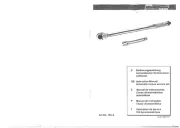
8 September 2025
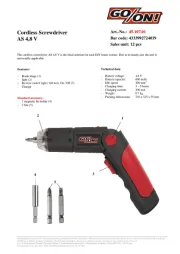
7 September 2025
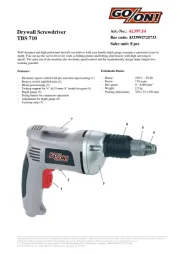
7 September 2025
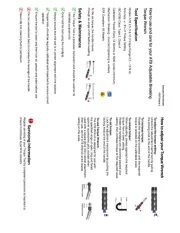
2 September 2025
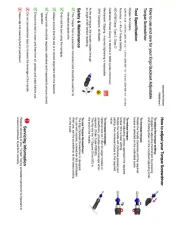
2 September 2025
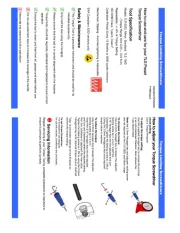
2 September 2025
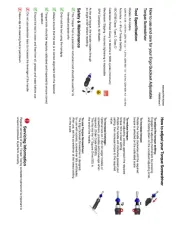
2 September 2025
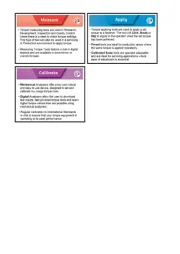
2 September 2025
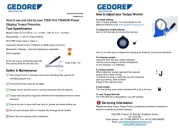
1 September 2025
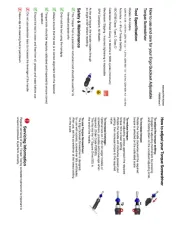
1 September 2025